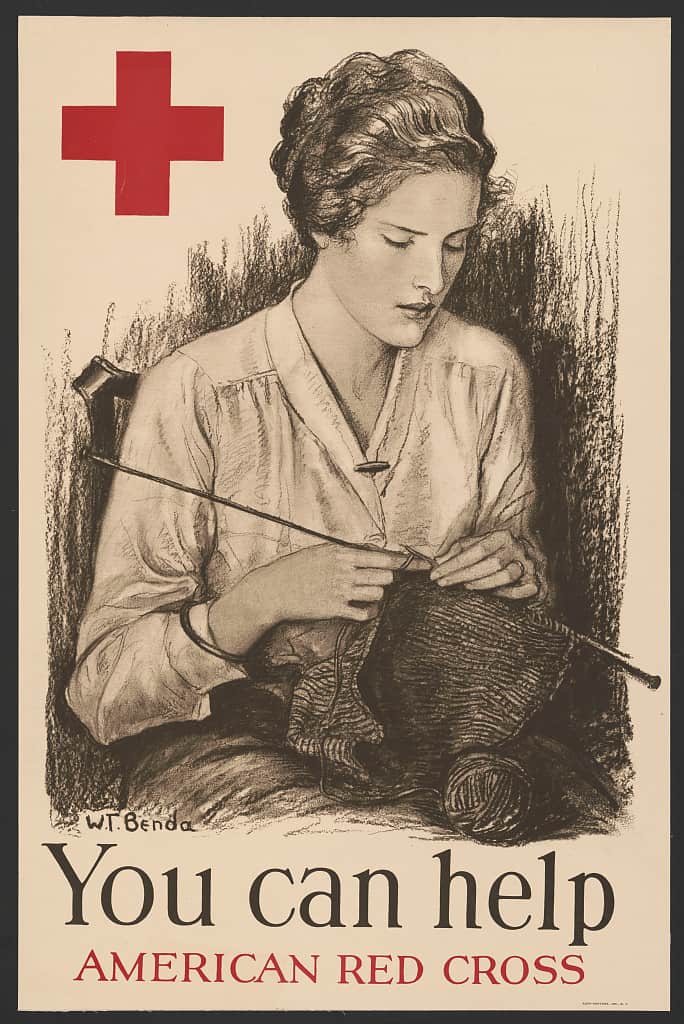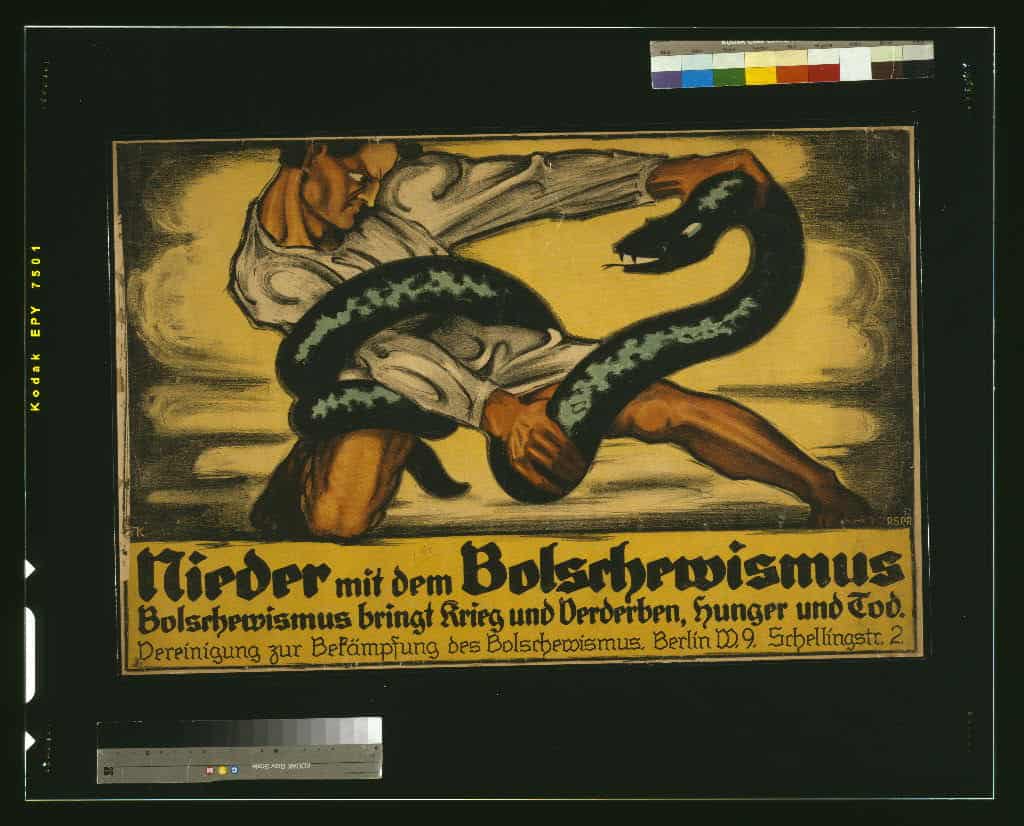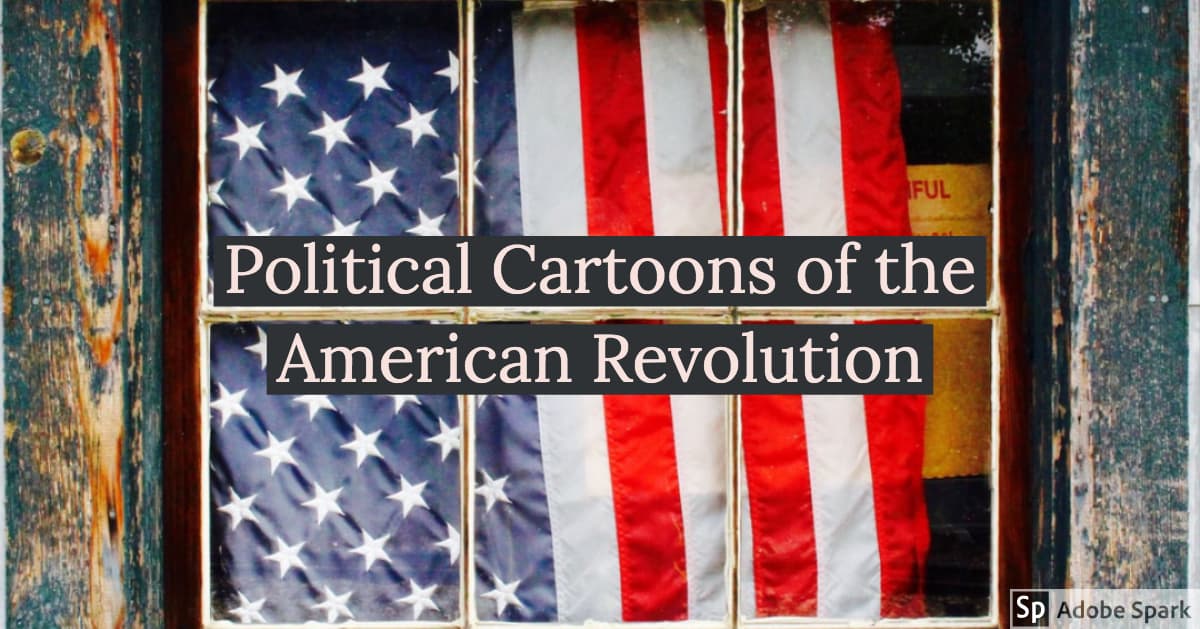Essential Question: How do we evaluate the impact that Jackie Robinson had on racial segregation by breaking baseball’s color barrier.
Historical Context
Jackie Robinson became the first African American to play in the Major Leagues on April 15, 1947, when he suited up in competition as a member of the Brooklyn Dodgers. Up until the point that Robinson took the field that day, it had been 50 years that Major League hadn’t had a single person of color on one of their teams. Not only did Robinson taking the field that day open up an invitation for colored players to be included in baseball, but also opened up an invitation for Jackie to receive insults and other threats/comments from other players, teams, and fans alike. It is the noble and honorable way in which Jackie handled this that is a big reason we as Americans honor him today.

The greatness about Robinson’s story is the fact that it doesn’t nearly begin and end that April day in 1947 when he took the field. He would become a person who’s legacy reflected a life-long journey of activism.
Jackie went on to attend UCLA where he earned the achievement of being the first athlete, no matter of race, white or black, to letter in 4 different sports (track and field, football, basketball, and baseball). While in school, Robinson did amazing in the classroom and demonstrated great character. A couple years after college, he was drafted in the United States Army. As a result of his qualities and achievements above, Robinson should have been a no doubt recipient for Officers Candidate School in the army, but his color of skin denied him and others of the same race. Not deterred, Jackie would turn towards a friend of his and heavyweight boxing champion Joe Louis, who was at the same Fort Robinson was applying to, and within a few weeks, with the help of Lewis and the determination of Robinson, the other candidates of color and Jackie got into Officers Candidate School.
When Jackie was discharged from the army, he went on to go back to playing baseball, signing with the Kansas City Monarchs of the Negro American League, a baseball league of all colored players in which they were allowed to play. It was at this time, that the owner of the Brooklyn Dodgers, a fellow by the name of Branch Rickey, had heard of Jackie and who he was and decided he would make Jackie the one to break the baseball color barrier.
While becoming the first African American player in the majors could have been his legacy on its own, Robinson made sure that he wasn’t just a name in a box score that one time in 1947. He starred for the Dodgers, winning the 1947 Rookie of the Year Award, helping Brooklyn reach the World Series (they lost to the New York Yankees). That year, as per an agreement with Rickey, he also learned how to fight back without fighting. Rather than react to the constant racial abuse from fans and other teams alike, Jackie used unfathomable restraint and poise, turning the other cheek so as not to give his detractors any reason to end Rickey’s “experiment.”
When Jackie made it to the big leagues, it would have been a big enough story as it is on its own that he was the one to break the color barrier. Jackie made sure that his story didn’t end only with that. He won the 1947 rookie of the year award, given to the top new player in baseball, and he helped the Dodgers make the World Series. He would go on to have a hall of fame career.
Historian’s Process

This site gives you the chance to “be the historian.” As you analyze each document, take into account both the sources of the documents and the point of view that’s expressed
- Who created the document
- What was the creator’s goal
- How does the document reflect the views and opinions of the time period
- How does multiple documents support or contradict one another?
Use these guiding questions to stop and think more deeply about each document:
- How did Jackie Robinson help to improve the lives of other Americans not only during his time but for people today?
- What does this document tell me about the American racial segregation during this time period of Jackie’s life
- Take a position on these questions presented with the documents and defend it with evidence from the documents and your understanding of contemporary America
(1) When Robinson is Called Out
According to the writer of this Editorial, what is it that Jackie Robinson exemplifies that needs to be followed? Why might this be important
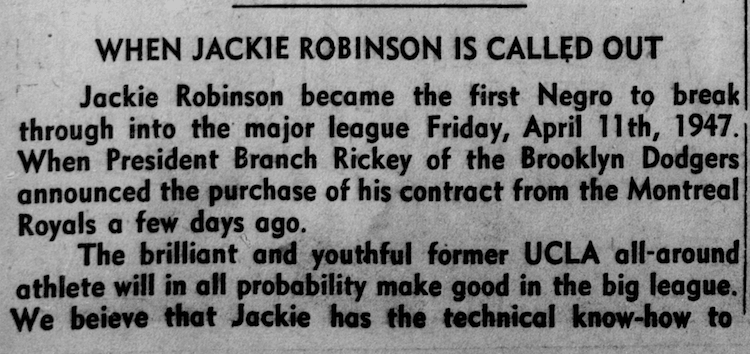

(2) Jackie Meets Detroit Mayor Candidates
How do you think having this photo taken of them with Jackie Robinson could either help or hurt the candidates for mayor at the time?

(3) Jackie getting Interviewed by Reporters
In this transcript of this interview with Jackie Robinson, he compares players from the South all of a sudden having to be on his side to his him having to root for his college rival, University of Southern California. Think about an example of this that would relate to your life? What would be difficult or awkward about this?

(4)“The Jackie Robinson Story”
How does this article show the great progress and change of perception from 1947, when Jackie first broke the color barrier, to June of 1950, when this article was published?
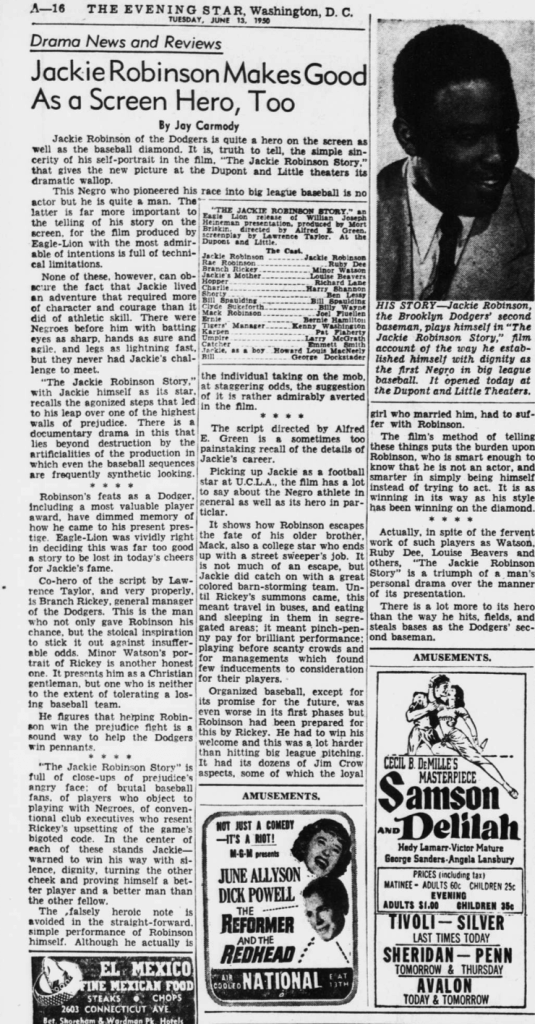
Jackie Robinson, Civil Rights Advocate
According to Jackie, What is his main concern/desire he wants from the president and what specific events/happenings cause this concern?
LETTER
JACKIE ROBINSON TO PRESIDENT DWIGHT D. EISENHOWER
MAY 13, 1958
| The Supreme Court ruled in 1954 that States must integrate their public schools, but few began to do so voluntarily. Although Arkansas had begun desegregation elsewhere in its school system, in September 1957 Governor Orval Faubus, hoping to gain political favor, used National Guardsmen to block entry of nine black students who were supposed to attend Little Rock’s Central High School that school term. Faubus alleged that without such action, violence would have erupted.When President Eisenhower reluctantly sent in Federal troops to protect the students and ensure their right to be at Central High, Jackie Robinson, now a coffee and food vending executive, was reasonably pleased although he believed that decisive Presidential action on civil rights was overdue. Over the years, he had grown increasingly impatient with what he regarded as Eisenhower’s failure to face up to the hard facts: Not only did racism exist, so did white efforts to physically intimidate Southern blacks who dared to challenge segregation. He therefore called upon the Chief Executive to guarantee the Federal Government’s support of black attempts to exercise rights already granted under the Constitution but in practice denied them because of white resistance. |

Choose one of the quotes from Jackie Robinson and argue why you think it might best represent who he was, what he desired, or his message, based on what you have learned so far about him.

Media Credits
(1) When Robinson is called out / Chronicling America – Library of Congress
(2) Jackie Meets Detroit Mayor Candidates / Chronicling America – Library of Congress
(3) Jackie Getting Interviewed by Reporters / Library of Congress
(4) “The Jackie Robinson Story” / Chronicling America – Library of Congress
(5) Letter to the President / National Archives
(6) Jackie Robinson Quotes / National Archives
Photo of Jackie Robinson (Historical Context) / Pixabay
A colored girl at a water fountain (Historian’s Process) / Wikipedia







